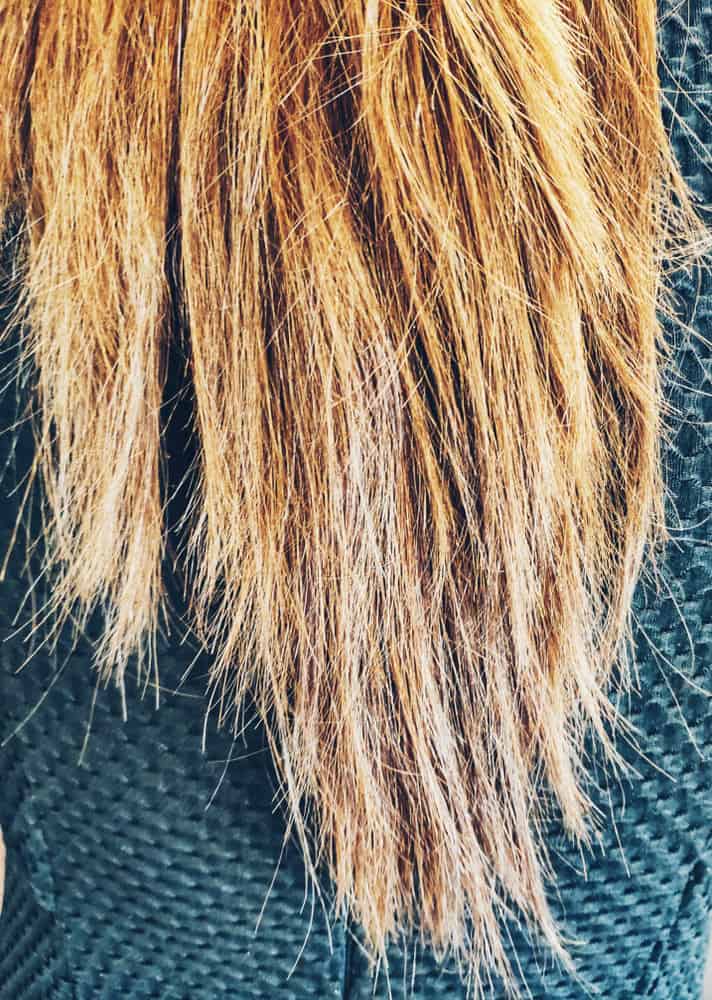Title: How to Repair Hair Damage: Tips and Tricks for Restoring Healthy Hair

Hair Damage: Understanding the Causes and My Experience
Hair damage is a common issue that many people face, including myself. Whether it’s from frequent dyeing, excessive use of heat styling tools, or neglecting regular maintenance, damaged hair can be frustrating and difficult to manage. As someone with personal experience in dealing with hair damage, I understand the need for effective solutions to restore health and vitality to your locks.
In this article, I will share various aspects of hair damage and provide tips and tricks on how to repair it. From understanding the causes of damage to implementing care routines and using specific products, you’ll find valuable information to help you on your journey to healthier hair.
Part 1: Common Causes of Hair Damage
H2: Dyeing and Bleaching: Protecting Your Hair Color
Coloring your hair can be a fun way to experiment with different looks, but it can also cause damage. The chemicals in hair dyes and bleaches strip away the hair’s natural moisture and weaken its structure. To minimize damage, consider dyeing your hair less frequently, opt for color-safe shampoos and conditioners, and incorporate natural remedies like olive oil or almond oil into your hair care routine.
H2: Heat Styling: Preventing Heat Damage
Using heat styling tools like flat irons, curling irons, and blow dryers can lead to dry, brittle hair prone to breakage. To limit damage, it’s essential to blow dry from a distance, use a heat protection product before heat styling, lower the temperature on your tools, and embrace heat-free hairstyles whenever possible.
H2: Neglecting Regular Haircuts: Nurturing Your Locks
Neglecting regular haircuts can lead to split ends, damaged hair, and hinder growth. Make it a habit to schedule regular trims to remove split ends and promote healthy hair growth. Additionally, incorporating hair masks and conditioners specifically designed for damaged hair can help nourish and restore vitality to your tresses.
Part 2: Easing Existing Hair Damage
H2: Remedies for Damaged Hair
If your hair is already damaged, don’t fret. There are several remedies you can try to restore its health and shine. One effective method is using olive oil as a deep conditioning treatment. Massage warm olive oil into your hair, cover it with a shower cap, and leave it on for at least 30 minutes before rinsing. Another option is almond oil, which helps to replenish moisture and repair damaged hair.
H2: Rejuvenating Color-Treated Hair
Maintaining vibrant color-treated hair requires extra care. To ease existing damage, aim to stay within one shade range to minimize the need for frequent touch-ups. Additionally, dyeing your hair less often allows it to recover and reduces the risk of further damage.
H2: Minimizing Damage from Heat Styling
If your hair is fried and frizzy from excessive heat styling, there are steps you can take to ease the damage. Begin by only brushing and detangling your hair when it’s dry, using a wide-toothed comb or a brush specifically designed for detangling. Avoid brushing wet hair to prevent breakage. Rinse your hair with cold water, as it helps to seal the hair cuticles and reduce frizz. Another effective remedy is using apple cider vinegar rinses, which balance the pH levels of the hair and promote smoothness.
Part 3: Limiting Further Damage
H2: Hair Care Routine for Healthy Hair
To limit further damage to your hair, consider adjusting your hair care routine. Start by washing your hair less frequently to allow natural oils to nourish and protect your strands. Look for shampoos and conditioners specifically formulated for dry, damaged hair to provide intense moisturization. Additionally, rinsing your hair with cold water helps seal the hair cuticle, leaving it smoother and more manageable. Finally, incorporating Argan oil into your hair care routine can restore shine and hydration to dry, damaged hair.
FAQs about Hair Damage
H3: How often should I dye my hair to avoid damage?
A: It’s best to dye your hair less frequently, allowing it time to recover. Aim for a gap of at least 8-10 weeks between dyeing sessions.
H3: Is it safe to bleach my hair at home?
A: Bleaching can be damaging to your hair, and it’s generally recommended to seek the help of a professional hairstylist to minimize the risk of damage.
H3: Can I blow dry my hair every day without causing damage?
A: Excessive blow drying can lead to heat damage. It’s best to limit blow drying to a few times a week and always use a heat protection product before styling.
H3: Should I brush wet or dry hair?
A: Wet hair is more prone to breakage, so it’s advisable to only brush and detangle your hair when it’s dry.
H3: How often should I wash my hair if it’s damaged?
A: Washing your hair every second or third day can help prevent excessive drying and minimize damage.
Conclusion
Repairing hair damage is a gradual process that requires patience and consistent care. By implementing the tips and tricks shared in this article, you can revitalize your hair and restore its natural beauty. Remember to embrace gentle hair care routines, protect your hair from excessive heat, and nourish it with effective treatments and products designed specifically for damaged hair.
Feel free to explore more articles on our website that cover various topics related to hair care, beauty, and overall well-being. Visit [Pureeluck.com](https://www.pureeluck.com/) to discover more valuable content.
Remember, your hair deserves the best care, and with the right approach, you can repair and transform even the most damaged locks into luscious, healthy tresses.